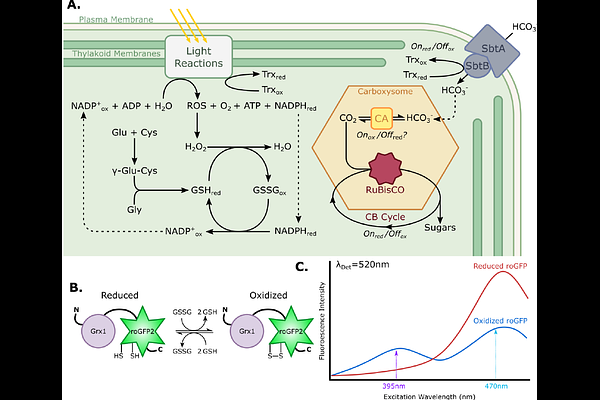Cyanobacteria form a procarboxysome-like structure in response to high CO2

Cyanobacteria form a procarboxysome-like structure in response to high CO2
Huffine, C. A.; Fontana, C.; Avramov, A.; Sempeck, C.; Cameron, J. C.
AbstractFixing 25% of CO2 globally, cyanobacteria are integral to climate change efforts. The cyanobacterial CO2 concentrating mechanism (CCM) features the carboxysome, a bacterial microcompartment which houses their CO2 fixing machinery. The proteinaceous shell of the carboxysome restricts diffusion of CO2, both inward and outward. While necessary for CCM function in air (0.04% CO2), when grown in high CO2 levels (3% CO2) representative of early earth, the shell would harmfully limit CO2 fixation. To understand how carboxysomes change form and function in response to increased CO2> conditions, we used a Grx1-roGFP2 redox sensor and single cell timelapse fluorescence microscopy to track subcellular redox states of Synechococcus sp. PCC 7002 grown in air or 3% CO2. Comparing different levels of compartmentalization, we targeted the cytosol, a shell-less carboxysomal assembly intermediate called the procarboxysome, and the carboxysome. The carboxysome redox state was dynamic and, under 3% CO2, procarboxysome-like structures formed and mirrored cytosolic redox states, indicating that a more permeable shell architecture may be favorable when [CO2] is high. This work represents a step in understanding how cyanobacteria respond to changing CO2 concentrations and the selective forces driving carboxysome evolution.